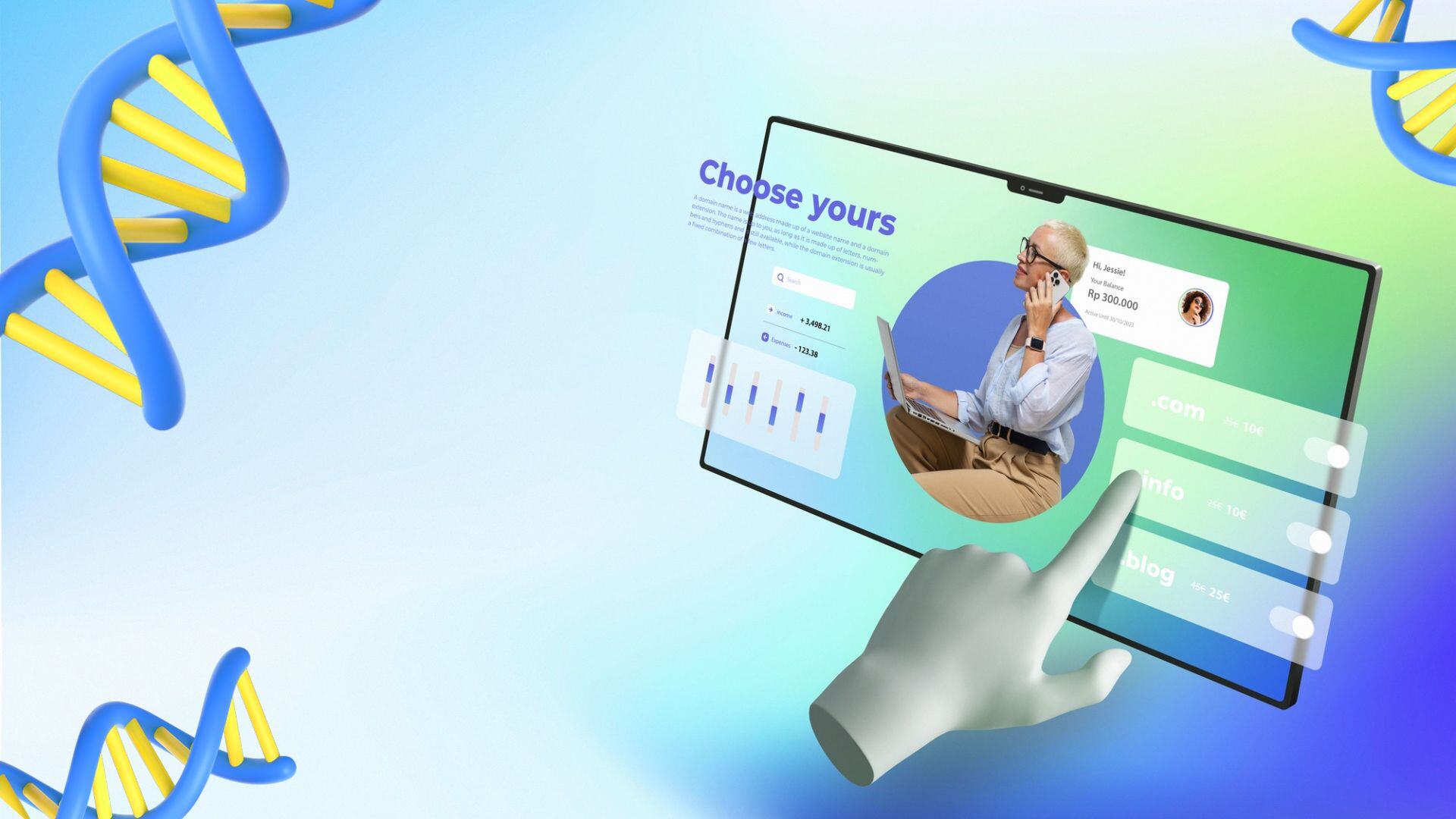A website plays a pivotal role in the general marketing strategies of life science companies. This article explores life science web design and its benefits, explains how it differs from other web designs, and describes the key stages of website development.
Skip ahead:
#1. What Is Life Science Web Design and How Is It Different?
#2. The Benefits of Web Page Design for Life Science
#3. Stages of Life Science Web Design Development
#4. Why Do You Need a Life Science Web Design Company?
What Is Life Science Web Design and How Is It Different?
Life science web design is the process of creating a website for life science companies. It includes web development, content creation, visual design, and video content and can also encompass SEO efforts.
Marketing professionals establish several goals for B2B websites:
- Engage and educate;
- Represent the business and its services;
- Showcase expertise;
- Establish trust;
- Convert and drive sales.
You should also aim for these goals when creating a website. The difference between a regular business and a life science company is in the methods the latter uses to achieve this goal.
A website for life science companies targets buyers with scientific or medical degrees. To demonstrate your expertise to these people and engage them, you need powerful visuals related to your area of research and work. For example, the video below shows the proteins in cells:
However, unlike regular B2B companies that can publish stock images on their websites, your business cannot use any visuals. The representation must be scientifically correct and match the most recent concepts of how the body, organs, tissues, cells, and molecules look and operate.
Scientific content must also follow these basic guidelines. That's why you cannot hire a random content writer and expect them to create a scientifically correct copy. You will need a person with a degree in your field or related areas.
Unfortunately, entrusting your researchers with content creation isn't the best idea either, since content must follow SEO requirements and be more engaging. The best practice for creating life science content is to hire a scientific writer with expertise in both fields.
The Benefits of Web Page Design for Life Science
Life Science web design has multiple benefits for the company.
Digital Representation
Today, every reputable business is expected to have a website. You can use it for inbound and outbound marketing.
A life science website contains all the necessary information for clients to make an informed buying decision. It will reach potential customers when and where your sales team cannot.
Customer Engagement
The content of your life science website will help you engage your customers. Add educational articles. Help your visitors embark on an educational journey with interlinking. Explain complex things and make people stay longer on your page with videos. Create interactive elements to become memorable.
Checkout this example of a life science company web design with interactive elements:
Lead Generation
A website is an inalienable part of many buyer journeys. People feel more control when they come to your website and consume the content rather than when interacting with the sales team and feeling certain pressure.
Websites boost conversions if you provide all the necessary information on the page and make your website engaging and trustworthy.
Showcasing Expertise
High-quality scientific blogs, graphics, and animation can demonstrate your expertise in the field and help your potential clients make the desired purchasing decision.
Establishing Trust
Trust is pivotal in most B2B purchases. In life science, you build trust by providing comprehensive information for your potential customers, educating your buyers, and demonstrating your expertise. The gained trust will help you convert visitors to leads and leads to customers.
Stages of Life Science Web Design Development
Website design for life science has several stages:
1. Analysis & PlanningIt is the most critical stage of website development for life science companies. At this stage, a business shapes the vision of how its future website will look like. They also do research and analysis to plan SEO, content, and design. Usually, you will need to do the following:
- Study your competitors;
- Create logo & branding;
- Pick initial keywords;
- Plan an SEO strategy;
- Outline consumer journey;
- Plan content strategy;
- Develop website architecture;
- Choose web development tools;
- Hire life science website experts.
2. Drafting
At this stage, professional life science web designers usually create several drafts for a business to choose one or more options. Drafts are usually made using UI design tools. Tools like Figma enable you to see how the website will look and also check certain interface interactions (like buttons). Don’t forget to make website versions for mobile devices.
At this stage, we can also create content for the key pages like the home page, service pages, and the contact page.
Drafting is vital since it can demonstrate the level of mutual understanding between the website designers and content writers on the one hand and the business on the other.
It can also showcase the drawbacks of initial planning. Don't be afraid to redo the analysis & planning. It's better to do it at the drafting stage than change the entire website after it’s ready.
The drafting stage ends once we agree on the website architecture, the visuals, and the content layout on the key pages.
3. Web Development & SEO
Once a life science company has agreed on a draft, the web development stage begins. If the content hasn't been created at the previous stage, that's the right time for this.
At this stage, you also need to plan your SEO:
- Create metadata for search engines;
- Optimize content and images;
- Plan URL structure;
- Create a sitemap;
- Apply the best practices for links;
- Build interlinking scheme;
- Create the robots.txt page;
- Start planning backlinking;
- Acquire SEO tools for technical SEO & SEO audit.
4. QA, Editing, & Publishing
At this stage, we:
- Fix bugs in website code;
- Give content to researchers for proofreading;
- Add new sections if necessary;
- Redraft some visuals.
After publishing your website, you should do a proper SEO audit and fix technical SEO. It will improve the website's crawlability, user experience, and ranking in Google and other search engines.
5. Enriching
Enriching is a continuous and regular process. Add scientific animation to your website to improve visitor engagement. Create a blog with an extended content plan to support your SEO strategy and educate your potential clients. Repurpose content for other marketing channels like conferences, email marketing, and SMM.
Why Do You Need a Life Science Web Design Company?
There are several ways to approach website design for a life science company. You can hire an in-house team or several agencies specializing in web development and scientific content and visuals. The best approach is to hire a life science website design company that can perform all these tasks.
The benefits of such a company include:
1. Cost
Hiring an in-house team generally costs less than ordering web design services from an agency. The hiring process for just one position can take weeks or even months. And if the person doesn't have ongoing tasks, you still have to pay for their work.
Additionally, you will need to hire a project manager to organize, monitor, and control the work of your web design team. Otherwise, you can do it yourself. In the case of an outsourced web design company, the manager's work is part of the price.
2. Expertise and experience
Life science web design agencies have previously worked with other companies like yours. They understand your specific pain points and needs, so you won't have to explain them over and over. Additionally, they can share the best practices and insights from the work with their current and previous clients.
3. Content created by experts
It can be tricky to find a writer who possesses the necessary knowledge, education, and expertise in your field and, at the same time, can create engaging content.
Our life science web design agency spends significant time head-hunting such individuals. We have an extended database of life science content writers and cooperate with them regularly. All of them have at least a Master's Degree in life sciences and proven writing skills.
4. All-encompassing approach
Nanobot offers clients a complex approach to creating marketing collateral for various channels:
- Website development;
- UI design;
- Scientific graphic design;
- Scientific content;
- Scientific animation.
There are multiple benefits of doing all the marketing materials in one place:
- You do not waste money and time searching for and hiring several agencies.
- You do not have to coordinate between several agencies.
- You do not risk certain things falling through the cracks in operational chaos.
5. Brand Consistency
While developing your marketing collateral, Nanobot will ensure that you have brand consistency across all the materials. In addition to web development, design, content, and animation, we also develop logo and brand guidelines.
Check out the example of brand consistency:

Wrapping up, life science web design requires complex expertise and extended experience in the field. The best way to create your website is to entrust it to an agency specializing in scientific content.
Are you ready to start life science website development with Nanobot?





